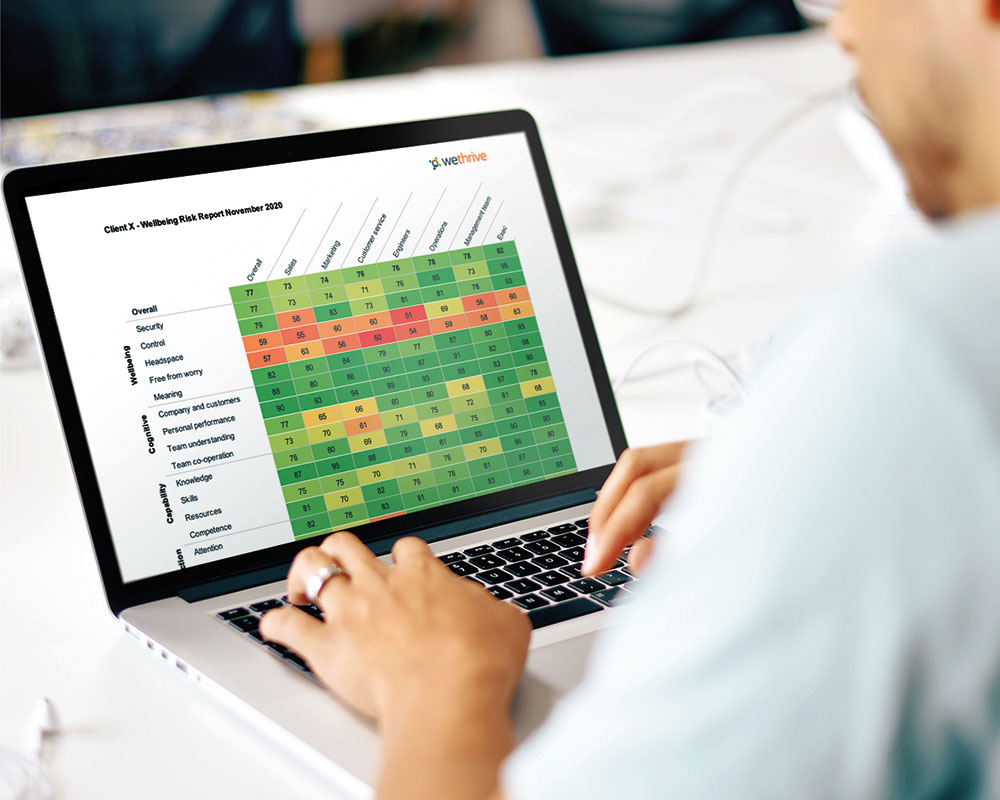Could a stress risk assessment action plan be the thing your organisation needs this stress awareness month?
This year’s theme is about regaining connectivity, certainty and control. Research shows that 65% of people in the UK have felt more stressed since the COVID-19 restrictions began in March 2020. And, unsurprisingly, the workplace has been heavily affected by this too. Burnout, absenteeism, mental health leave and presenteeism have all contributed to a culture of stress, anxiety and underperformance, made worse by the effects of Covid.
So how can we regain connectivity, certainty and control in the workplace?
What is a stress risk assessment action plan?
A stress risk assessment action plan allows you to get a deeper understanding of your people’s wellbeing indicators and really identify where stress begins to manifest itself. Looking at these results, you can then develop a comprehensive plan for improvement and tackle the causes of stress in your teams.
While it’s likely that you’ll uncover different stressors affecting your office-based teams and your remote or hybrid teams, it’s important to design a stress risk assessment action plan that encompasses everybody in your organisation.
HSE recommends a stress risk assessment for all organisations
Employers have a legal and moral obligation to protect their employees health, safety and welfare. However, since switching to remote work, they’ve had substantially less control over their employees working conditions and wellbeing.
Organisations must, therefore, ensure that their remote workers are getting the same level of care as they would in the office. This includes providing mental health and wellbeing support and doing a health and safety audit of employee workstations.
HSE recommends that employers run a stress risk assessment to recognise any signs of stress or anxiety that could negatively impact wellbeing. However, recognising signs of stress is only half the battle. Once you’ve identified the cause, you’ll need to implement a solution that allows your employees to regain connectivity, certainty and control.
Regaining connectivity, certainty and control with a stress risk assessment action plan
If your employees feel disconnected from their role or organisation, uncertain in their abilities to progress, or feel they lack control over their employee experience they will be far more susceptible to stress and anxiety. This will ultimately cause your people to be less engaged, demotivated and more prone to error.

Utilising a stress risk assessment action plan will provide you with practical steps to improve these areas and ultimately help your employees regain connectivity, certainty and control.
What should my stress risk assessment action plan include?
1. A template for analysis
What core areas should your stress risk assessment action plan cover? Could a lack of resources be a cause of stress? Or poor team communication and feelings of unity? Define the parameters of your people’s working experience so you know where to focus your questions and analysis.
For example, at WeThrive we explore 16 key needs in our 4C Employee Experience Model that can cause distress for your people if they aren’t sufficiently met.
2. An employee survey
You won’t get a realistic picture of your people’s working lives without asking how they feel. An employee survey will get a standard set of responses for each individual and helps get to the root cause of stress without introducing personal biases. Before designing your stress risk assessment action plan, you need your employees to show where their stress lies.
For advice on building your own survey you can read our guide or try WeThrive’s survey for free.
3. A follow-up plan for every team
“What next?” is one of the most common questions following an employee survey. It can be extremely difficult to analyse data and design an effective follow-up plan without introducing personal opinion or biases, or possibly human error.
See how your people score in specific areas and look at the possible causes. If your customer service team isn’t getting sufficient headspace could it be because they don’t have somewhere to reflect and get some privacy? Or perhaps they think the workplace culture expects them to be busy continuously?
Ask the customer service manager to reflect on what they could be doing to improve this for their people. For example, encouraging their people to take periodic breaks every 90 minutes, or start leading by example by not sending emails after 6pm or on weekends.
Repeating this process for every team can be arduous, but is crucial to develop an effective stress risk assessment action plan and build productive, happier and healthier teams.
How WeThrive can help
Run a free WeThrive survey today and in 7 days you’ll get a stress risk assessment action plan for your organisation. WeThrive will uncover the specific vulnerabilities among your people, and we won’t stop there. We’ll break down the data for you and tell you precisely what actions you should take to alleviate stress, and improve feelings of connectivity, certainty and control in your organisation.
When your survey is complete you’ll receive:
- A stress risk heat map with your employee data
- Top 2 wellbeing recommendations for your business
- Top 2 engagement recommendations for your business
- Curated learning resources
Bonus features:
- Top areas of engagement and wellbeing
- A full results review for every area of your business
Check out a sample report from our stress risk assessment action plan to see how WeThrive could help you.
Four simple steps to get your Stress Risk Assessment Action Plan
- Create your free WeThrive account by signing up here (no credit card info required)
- Send out your survey in a few clicks – sit back and relax for 7 days
- We’ll send you the analysis for your organisation (and a few extra goodies)
- Work through our recommendations to help your people thrive!
About WeThrive
Employee Engagement, Evolved
WeThrive is the agile employee engagement platform that uncovers how your people truly feel, enabling managers to create highly effective teams, increase employee retention and employee wellbeing and deliver better business results.



